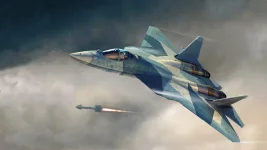- Views: 2K
- Replies: 3
In a major boost to India's military self-reliance, India and Russia have entered into a significant agreement to manufacture small aircraft piston engines on Indian soil.
The deal, which was reportedly finalised in July 2025, is set to directly support the nation's rapidly expanding fleet of uncrewed aerial vehicles (UAVs) and loitering munitions.
While the specific engine models to be produced under this agreement have not been publicly disclosed, the partnership reinforces the long-standing strategic defence relationship between Moscow and New Delhi, transitioning it from a buyer-seller dynamic towards joint development and manufacturing.
The agreement comes at a time when unmanned systems are fundamentally changing the nature of warfare. These systems are crucial for modern military operations, performing tasks such as intelligence gathering, surveillance, reconnaissance (ISR), and carrying out precision strikes.
Small piston engines are highly valued for these applications due to their fuel efficiency, reliability, and compact size, making them ideal for powering medium-sized UAVs and single-use "kamikaze drones."
The effectiveness of such systems has been demonstrated in recent global conflicts, including the war in Ukraine, as well as during India's own Operation Sindoor in May 2025.
The engines produced through this collaboration are expected to be integrated into a number of indigenous Indian platforms. One such system is the Nagastra-1, a loitering munition developed by a subsidiary of Solar Industries, which was successfully tested by the Indian Army in 2024.
The deal will also likely benefit India’s growing private defence sector, supporting projects like the Astra 100 kamikaze UAV, which was displayed by Raghu Vamsi Aerospace at the Paris Air Show in June 2025.
By establishing a domestic production line, India can ensure a stable supply chain and improve the operational readiness of its armed forces.
Industry experts speculate that the engines will be high-performance, lightweight units with power outputs between 50 and 150 horsepower. This is comparable to globally recognised engines like the Limbach L550 or the Rotax 912, which powers the Turkish-made Bayraktar TB2 drone.
Such engines would enable Indian drones to achieve extended flight times of 6 to 24 hours, carrying payloads for surveillance, electronic warfare, or precision-guided munitions.
A crucial component of the deal is the inclusion of a Transfer of Technology (ToT) clause, which will empower Indian companies to not only manufacture but also maintain, repair, and eventually innovate upon these engine designs, fostering a truly self-sufficient defence ecosystem.


